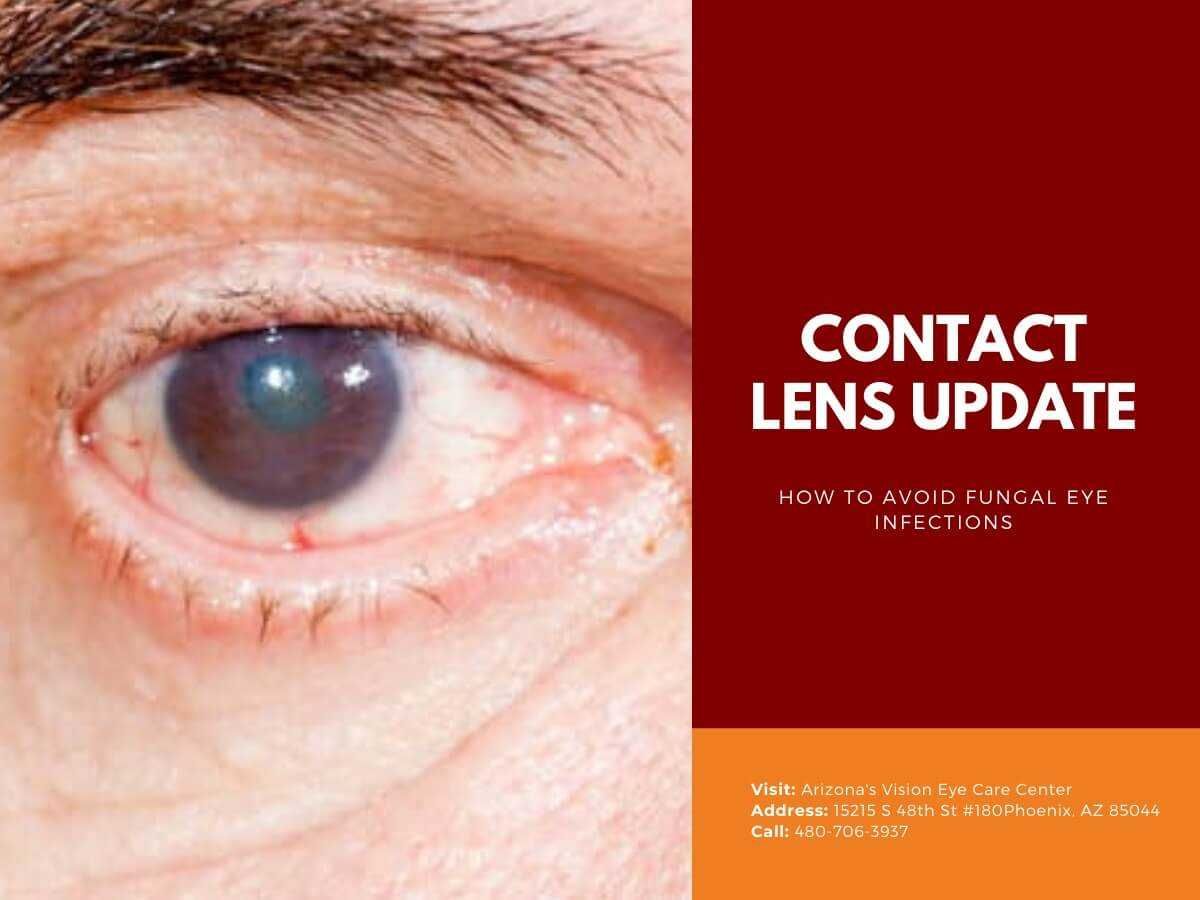
Contact Lens Update: How To Avoid Fungal Eye Infections – Eye Doctor

How To Avoid Fungal Eye Infections
Earlier this year, contact lens wearers around the world got a scare when news of an outbreak of an eye infection called fungal keratitis came out. This fungal eye infection can be treated relatively easily if caught early, but more established cases may lead to a need for a corneal transplant or worse, loss of the affected eye.
According to the Centers for Disease Prevention and Control (CDC), as of May, there had been 130 confirmed cases of fungal eye infections in the US in a one year period, and of those cases, all but 5 were in contact lens wearers. 37 of these people have required corneal transplants. Bausch and Lomb’s ReNu with MoistureLoc contact lens cleaning solution has been blamed by some for the outbreak, since 76% of contact lens wearers who contracted fungal keratitis used that particular solution, while it holds only a 10% market share in contact lens cleaning solutions. The product has since been pulled from the market while investigations continue. The consensus seems to be that the fungus is not present in the solution itself, but rather that it forms a film in contact lens cases that prevents disinfection of the case. The fungus itself, Fusarium, is quite common and can be found in water, soil, and plants, so could easily end up in contact lens cases that are not properly disinfected. There have been cases in Europe and Asia as well, and links to ReNu products there are being investigated.
There are several steps that soft contact lens wearers can take to protect themselves from fungal eye infections, many of which they should be doing already in the routine proper care of their contact lenses. First, if people have any of the ReNu with MoistureLoc solution, they should stop using it and throw the rest away. Second, follow basic hygiene good sense, like washing your hands before you touch your contact lenses. Clean your contact lens case thoroughly, store it where it will not get contaminated, and replace it periodically. There are new lens cases available that are made with antimicrobial agents to prevent contamination. Don’t mix old and new cleaning solution, and don’t wear lenses longer than their prescribed schedule.
If you are afraid you may have a fungal eye infection, seek help right away. Symptoms include blurry vision, clouding of the eye, loss of vision, excessive irritation, discharge, lesions on the eye, and a new sensitivity to light.

Looking for top eye care in Phoenix? Our expert optometrists provide quality vision exams, glasses, and contacts. Book your appointment today!
contact lens update, contact lenses, Fungal Eye Infections
